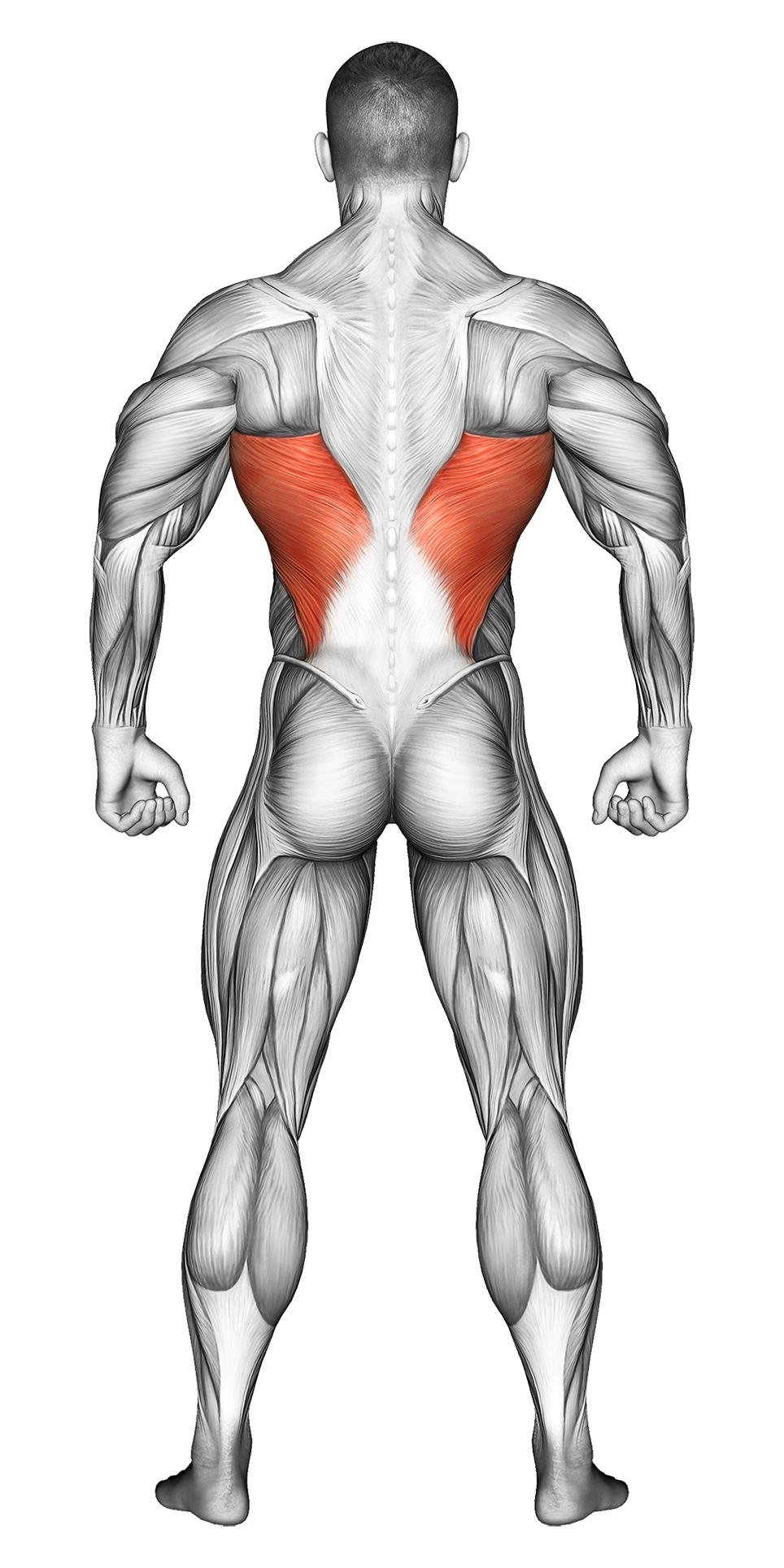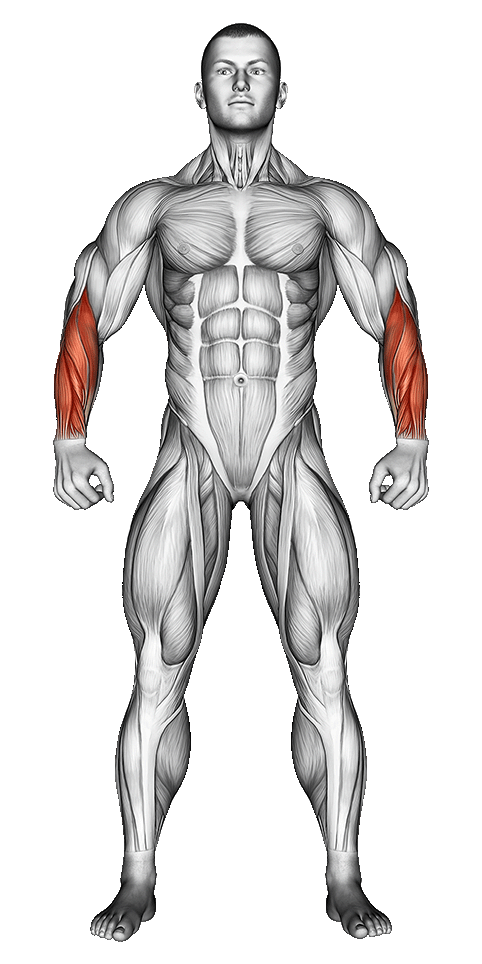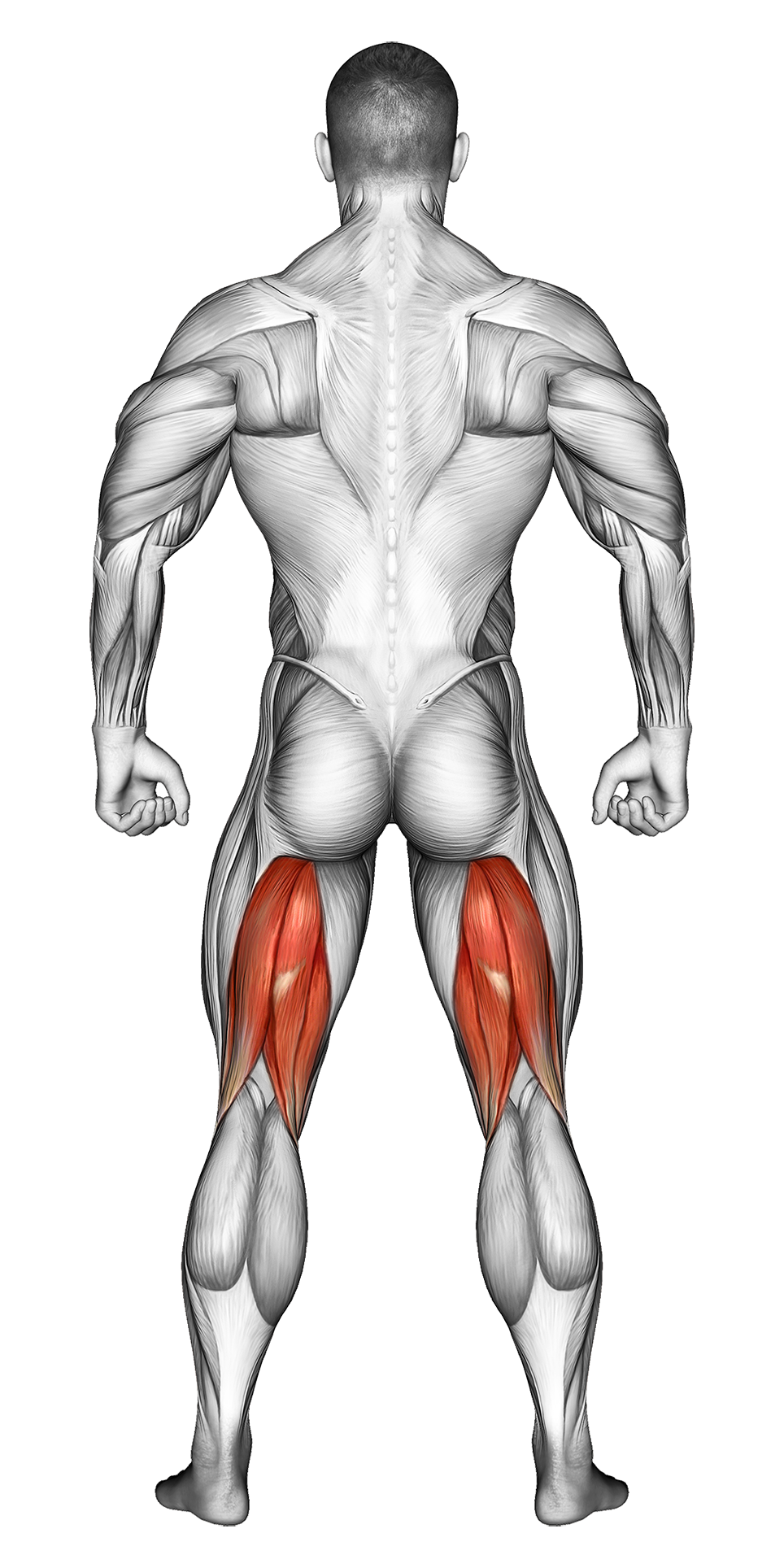Rack Pull: Video Tutorial & Exercise Guide
| Workout | Rack Pull |
| Primary Muscle Group | Lats |
| Secondary Muscle Group | Forearms, Hamstrings |
| Equipment Required | Rack, Barbell |
| Force Type | Hinge |
| Mechanics | Compound |
| Exercise Type | Strength |
| Difficulty | Intermediate |
Rack Pull: Video Tutorial & Exercise Guide
Secondary Muscles
How to do Rack Pull – Step-by-Step Guide
- Step 1: Set the safety bars on a squat rack or power rack just below knee height and place a loaded barbell on the rack. Stand with your feet shoulder-width apart and your shins close to the bar.
- Step 2: Bend at your hips and knees, keeping your chest up and your back straight. Grip the barbell with both hands just outside your legs, using either a double overhand or mixed grip.
- Step 3: Engage your core and pull your shoulders back. Begin the lift by driving through your heels and extending your hips and knees until you're standing tall with the barbell at thigh height.
- Step 4: Pause briefly at the top, keeping your chest lifted and shoulders back. Slowly lower the barbell back to the rack by bending at your hips and knees, maintaining control throughout the movement.
- Step 5: Reset your form and repeat for the desired number of reps, ensuring you maintain proper posture throughout the exercise.
Rack Pull Overview
The Rack Pull is a partial deadlift variation that focuses on the top half of the movement, making it an excellent exercise for building strength in your posterior chain, including the lower back, glutes, and hamstrings. By lifting the bar from an elevated position (just below the knees), you can lift heavier weights and focus on locking out the deadlift motion without the need for a full-range pull.
Rack pulls are particularly beneficial for those looking to improve their deadlift strength, target the upper back muscles, or increase overall pulling power. They also reduce the range of motion, making it easier for those with limited mobility or recovering from injury to perform the movement safely.
Benefits of Rack Pull
Rack pulls target several major muscle groups, including the traps, lats, lower back, glutes, and hamstrings. The exercise builds pulling power, making it an effective movement for strengthening the posterior chain and improving your deadlift lockout.
By focusing on the top half of the deadlift, rack pulls allow you to lift heavier weights, which helps develop upper body strength and stability. They also place less strain on your lower back compared to a full deadlift, making them a safer alternative for those with lower back issues.
Rack pulls are a great exercise for improving grip strength as well, especially when using heavier weights. The controlled motion and partial range of movement make it ideal for beginners and advanced lifters alike.
Rack Pull Pro Tips & Advanced Techniques
When performing rack pulls, focus on maintaining a neutral spine and engaging your core throughout the movement to avoid rounding your lower back. To maximize the benefits, slow down the lowering phase to increase time under tension. For advanced lifters, try adding resistance bands or chains to increase the intensity. Ready to strengthen your posterior chain? Let’s pull!
Progression Plan for Rack Pull
| Level | Sets | Reps | Progression Tips |
|---|---|---|---|
| Beginner | 2-3 | 8-10 | Start with lighter weights and focus on proper form. Keep your back flat and your core engaged throughout the movement. |
| Intermediate | 3-4 | 6-8 | Increase the weight gradually, maintaining full control during each rep. Focus on pulling with your hips and glutes to lock out the movement. |
| Advanced | 4-5 | 4-6 | Use heavier weights, slow down the lowering phase to increase time under tension, or add resistance bands or chains for increased intensity. |
Frequently Asked Questions (FAQs) of Rack Pull
What muscles do Rack Pulls target?
Rack pulls primarily target the lower back, glutes, hamstrings, traps, and upper back. The movement also engages the core for stability and strengthens grip.
Is the Rack Pull a safer alternative to the Deadlift?
Yes, the rack pull reduces the range of motion, placing less stress on the lower back compared to the full deadlift. This makes it a safer option for individuals with back issues or those recovering from injury.
How can I make Rack Pulls more challenging?
To increase the difficulty, use heavier weights, slow down the eccentric (lowering) phase, or add resistance bands or chains to create more tension during the lift. You can also try performing rack pulls from lower positions as you advance.
How often should I include Rack Pulls in my routine?
Include rack pulls 1-2 times per week as part of your back or full-body workout. They can be combined with deadlifts, rows, or other pulling movements for complete posterior chain development.
What common mistakes should I avoid?
Avoid rounding your lower back or pulling with your arms instead of your legs and hips. Ensure you maintain a tight core and neutral spine throughout the movement to prevent injury.
Share


